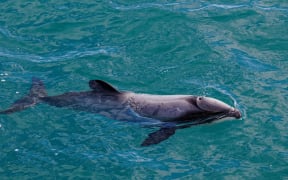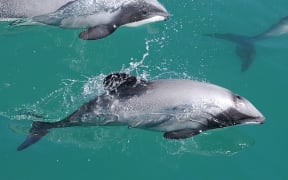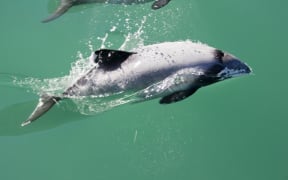Cats, not fishing nets, are by far the biggest threat to dolphins.
That is according to a proposed Threat Management Plan released by Fisheries New Zealand and the Department of Conservation.
It estimates that on average 334 nationally vulnerable Hector's dolphins and two nationally critical Māui dolphins, died from toxoplasmosis every year, due to cat faeces making its way into the water.
That dwarfed the 58 they estimated died in trawl or set nets.
While cats may be right up there with dolphins on the cuteness scale, a new report said the two were not good bed fellows.
Already in the cross-hairs of environmentalists over their laying waste to native birds, the danger they pose to dolphins has provided yet another reason to control the cat population.
Conservation Minister Eugenie Sage would prefer education to extermination.
"It's ensuring that their faeces don't go into streams and waterways so cat owners that keep their cats and indoors can help and things like riparian planting and better understanding the whole disease."
But a dolphin expert, professor Liz Slooten, was surprised the theory that cats posed a greater risk to dolphins than fishing nets, had even seen the light of day, and described it as a nonsense.
She said DOC and Fisheries NZ were warned by a panel of experts ahead of the release of their proposed plan that the danger posed by toxoplasmosis from cat faeces was tenuous at best.
"The expert panel told them don't do this. [They said] Put a couple of pages in your report explaining what you know and what you don't know about toxoplasmosis but don't go comparing it directly, the numbers of toxoplasmosis deaths with the number of bycatch deaths, you don't have enough information to pull that off."
Prof Slooten said the plan itself said there were still a lot of uncertainties around this theory and noted that toxoplasmosis was not usually the primary cause of death.
She said there was a danger the focus on such a far out theory would divert attention away from the genuine threat posed by fishing nets.
On this issue the the plan does not seem to have pleased fishers or environmentalists.
The head of Fisheries Inshore New Zealand, Jeremy Helson, said a plan to widen a ban on trawling and set nets in areas where there was a higher risk to Māui and Hector's dolphins would cost his industry hundreds of millions of dollars.
"Under the most extreme options, this would wipe out a lot of operators, there will be hundreds of people that simply won't be able to continue operating in the face of these suggestions that the government's put forward. So you don't just take out the operator, you take out the revenue of people that work for them, people that process their fish."
Mr Helson said a ban on set nets in North Island west coast harbours would see supplies of kahawai, flat fish and mullet dry up.
Prof Slooten said it was good to see an extension of the ban on set nets to cover the entire west coast of the North Island, which may give the Māui dolphin, population 63, a fighting chance.
But she said the plan did not go nearly far enough when it came to protecting Hector's dolphins, whose population had dropped by half to an estimated 15,000.
The proposed Threat Management Plan is out for public consultation until August with advice due to be given to the Conservation and Fisheries Ministers for a final decision by year's end.





